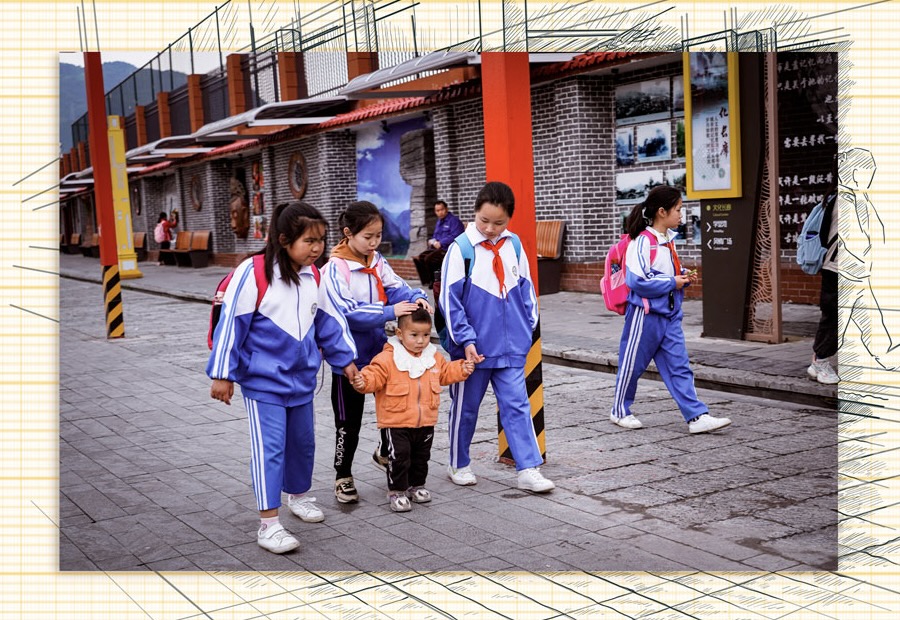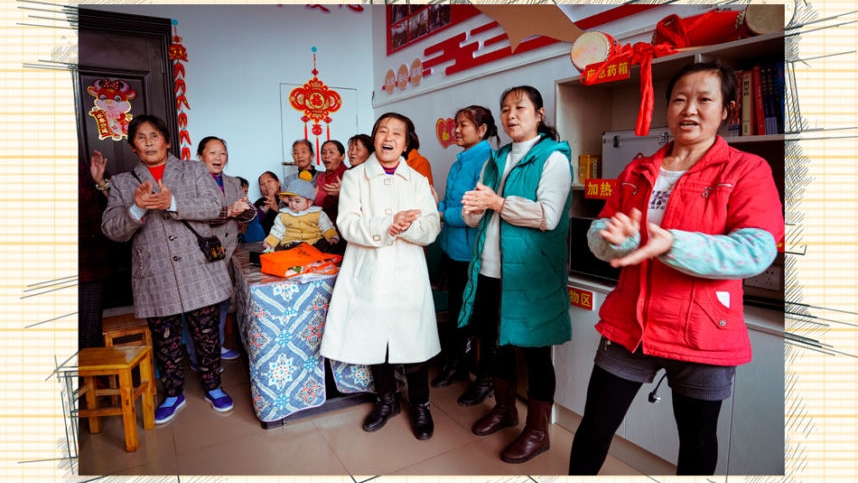On February 25, 2021, on the eve of the centenary of the formation of the ruling Communist Party (CPC), China declared the end of absolute poverty. Amidst the COVID-19 outbreak, when the rest of the world witnessed a rise in poverty for the first time since 1998, the world’s most populous country claimed that it has successfully lifted its remaining 100 million out of absolute poverty.
In an ideal world, the achievement would be an inspiring story. However, the US and the rest of the west continue to ignore or even cast aspersions on it. Tricontinental: Institute of Social Research’s detailed report sets the record straight and ignites a public debate around the issue. As Tings Chak, one of the researchers leading the study, says, amidst the global reverses during the pandemic, how China was able to achieve its targets of poverty alleviation “needs to be studied, better understood, and shared with popular movements and left forces.” Speaking to Peoples Dispatch, she insists that China’s successful battle against poverty is “neither a miracle nor a coincidence, but a part of its process of socialist construction,” which the working classes of the world want.
Emerging from feudal and colonial loot
The study underlines the commendable achievement of the CPC in the last 62 years of its rule. China, the world’s largest economy in the eighteenth century, became one of the poorest countries in the early twentieth century. The study notes, “in 1950, only two Asian and eight African countries had lower per capita GDPs than China. In other words, PRC was the eleventh poorest nation in the world upon its founding.”
Refuting the popular myth that the first three decades of the Chinese revolution were the days of underdevelopment and stagnation under Mao Zedong, the study highlights the history of the People’s Republic of China (PRC) during that time as the foundation period which became the basis of rapid achievements later. For example, the study points out that between 1948 and 1978, the average life expectancy in China increased by 32 years. The literacy rate increased from around 20% to over 65% despite the population increasing from 542 million to 937 million.
This time created the base for the technological boom. The study highlights how China, which did not have a car manufacturing plant in 1949, sent its first satellite to the space Dongfanghong (East is Red) in 1970.
In the first few years of the revolution, the PRC took steps to end the feudal relations in production and redistributed land to millions of Chinese, building thousands of agricultural cooperatives, paving the way for faster growth in the following decades.
Still, when Deng Xiaoping, Mao’s successor, proclaimed that “pauperism is not socialism, still less communism,” and initiated widespread reforms in 1978, almost 80% of the Chinese people lived in absolute poverty.
The study reports, that though wonderful that the Chinese economy grew by 35 times between 1978 and 2017, for the builders of socialism, the better news is that from over 80% in 1978, the percentage of absolute poor in the country went down to 9% in 2011 and to zero in 2021.
Building of a moderately prosperous society (Xiaokang)
China successfully combating poverty even during the pandemic, the study notes, is a sign of its socialist commitment. “[T]his stands in contrast to capitalist societies’ indifference to the needs of the poor and the working classes, whose conditions have only worsened during the pandemic.” It is a mission to build a moderately prosperous society as proclaimed by the CPC.
China has lifted 850 million people out of poverty since 1959. That is 70% of all people lifted out of poverty in the world. The most intensive phase of poverty reduction started in 2013. Since 2013 it has lifted around 100 million people out of absolute poverty. In contrast, in 2020, at least 71 million people slipped back into poverty across the rest of the world.
The study underlines the debates around the definition of absolute poverty. According to the World Bank, a person earning less than USD 1.9 per day (2010 base year) is categorized as living in absolute poverty. According to any standard, this is quite low as no one can get all basic amenities with that income. China fixed its official poverty line at 2,300 Yuan per person per year, which, adjusted with the PPP, was at USD 2.3 per day in 2011. This amount has gone up to 4,000 yuan after being adjusted to 2020 prices. In other words, anyone earning less than 4,000 yuan a year is considered absolute poor in China.
In actual terms, the average income for the registered poor households in China today stands much higher at 10,740 Yuan.
Chinese policy has adopted a multidimensional approach to poverty, acknowledging problems of the fixed income definition. Apart from guaranteeing everyone a minimum annual income, the program also includes two assurances — food and clothing — and three Guarantees — health, housing with water and electricity, and free and compulsory education for nine years). As Chak explains, the critics of the Chinese program of TPA who say that roughly two dollars a day is meager should remember that “income is just the starting point,” and until everyone gets their two assurances and three guarantees, they are not considered as lifted out of absolute poverty in China. She argues that differences between Chinese poverty alleviation programs and similar programs in other countries are fundamental in the former’s insistence on using sustainable development in rural infrastructure as the central method.

How did the Chinese do it?
The study points out China’s three different approaches of welfare mechanism, development-oriented poverty alleviation, and targeted assistance to achieve its goal of eradicating absolute poverty in the country. The country based its program on a five-pronged method to build sustainable rural prosperity by creating new industries in agriculture and for small scale production; relocating the population from areas that could not be developed; adopting an ecological compensation program to create new employment opportunities; building new educational institutions; providing detailed social assistance to all in need.
China has established over 300,000 new industrial bases for agricultural and related production in 832 poor counties since 2013. They currently employ over 22 million people. Over 9.6 million people were shifted from uninhabitable rural locations to newly built urban areas under the program. These new urban areas were complete with houses, nursing homes, cultural centers, educational institutions, hospitals, etc. People relocated were trained for jobs, which resulted in more than 94% of households having employed members.
Implementing these strategies would not have been possible without the help extended by both public and private sectors in the country and volunteer work done by more than 3 million party members. The study identifies, “a combination of the ‘visible’ and ‘invisible hand,’ together with the mobilization of broad sectors of the society, was the hallmark of China’s poverty alleviation in this ‘targeted’ phase.”
The party cadres were mobilized earlier than the official adoption of the targeted program to go to remote areas to conduct surveys of the poor and work among them. The study notes, in 2014, the CPC organized 800,000 of its cadres for the work. Three million members were sent to rural areas starting 2013 to live and help in the poverty alleviation programs. These cadres lived in the areas for one to three years away from their families. The study notes that at least 1,800 of them lost their lives while performing their duties.
Altogether more than 10 million people have been mobilized since 2013. This includes state officials, party cadres, national social organizations such as trade unions, private enterprises, military, and student organizations. These sections of the society mobilized workforce as well as finances — China has spent over USD 246 billion on the program since 2013 — in the overall poverty reduction program.
In brief, China’s targeted poverty alleviation program is a great example to understand how China is different from the liberal west. The Chinese system works as a collective with very little difference between the public and private sectors.
Rising acceptability of the Chinese government and tasks ahead
The report cites a Harvard University-led study of 2020 that says that the Chinese government’s overall approval rating in rural and urban areas has increased since 2003. Another study published in the Washington Post last year confirms this. Both the studies cite its poverty alleviation program and successful fight against the COVID-19 outbreak as the main reasons for the growing support of the CPC.
However, such achievements have not stopped the CPC from underlining certain challenges to its overall socialist program. It has noted how the Gini coefficient, a measurement of inequality, is increasing in the country. According to the World Bank, it was 29% in 1981. It rose to 49% in 2007. Despite going down to 47% in 2012, it remains high and a matter of concern. The CPC has now started taking measures to combat the rising inequality by focusing on relative poverty in the country.
As Chak says, “to be able to study, have a house, be fed, enjoy culture as aspirations shared by the working classes and the poor of the world” and CPC has made it sure for everyone in China, but that is not the end. As the study notes, eradication of absolute poverty in the country, “rather than being an endpoint, is one phase in the construction of socialism [in China] that must be deepened and expanded.”





